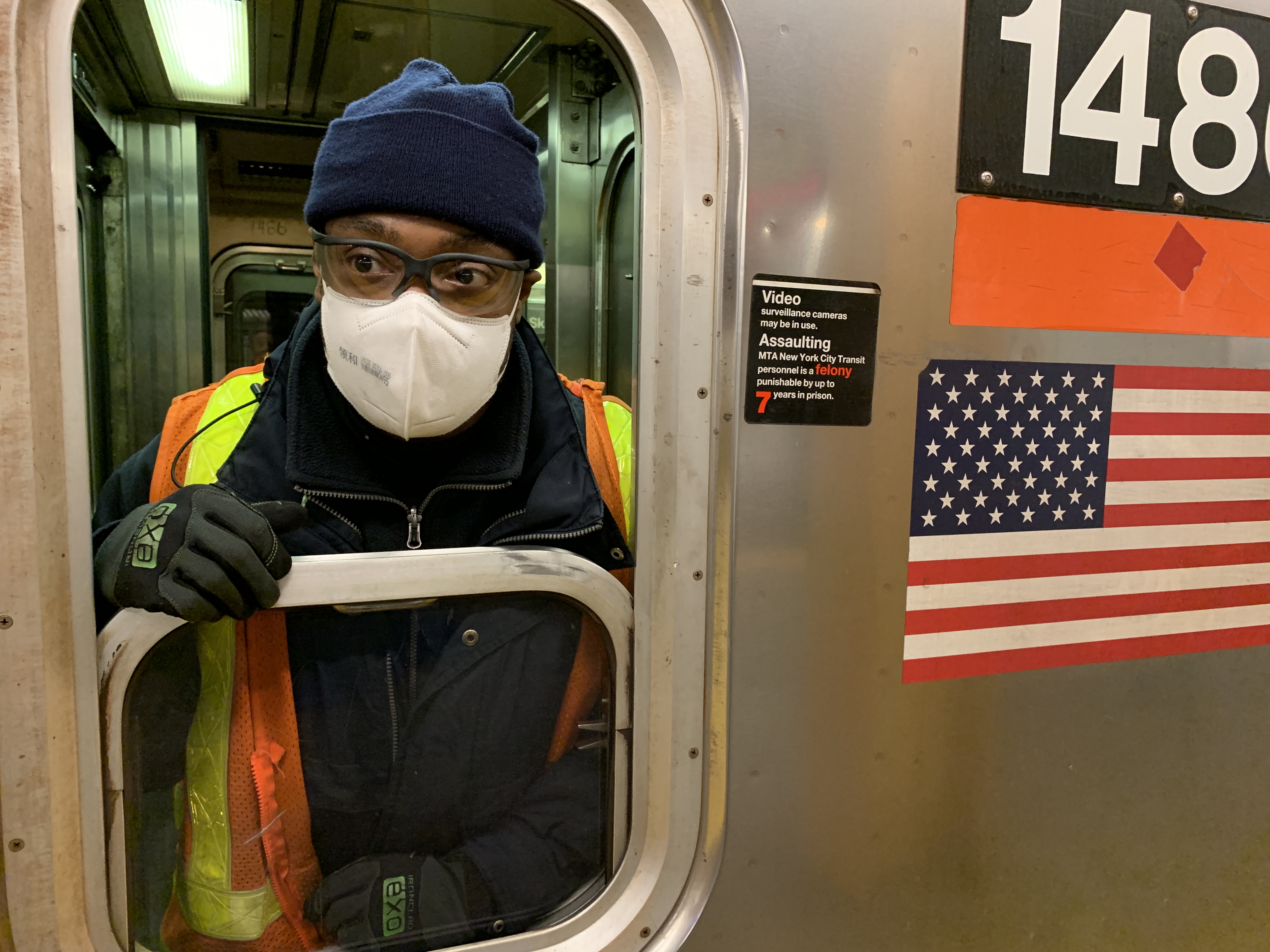NYU School of Global Public Health is embarking on a series of studies to evaluate the risks and impact of the COVID-19 pandemic on one of the city’s essential workforces: transit workers. This research will be conducted in coordination with the Transport Workers Union (TWU) Local 100, representing more than 40,000 New York City bus and subway workers.
New York City has the largest and most complex mass transit system in the United States, with 7.6 million weekday riders on its subways and buses prior to the COVID-19 pandemic. The Metropolitan Transportation Authority (MTA) has largely continued service on subways and buses throughout the pandemic to ensure that doctors, nurses, grocery and delivery workers, first responders, and other essential workers could continue to get to work and keep the city running.
“Our research aims to identify and better understand the individual and workplace factors that put this essential workforce at risk for COVID-19, in an effort to protect their health and wellbeing,” said Robyn Gershon, clinical professor of epidemiology at NYU School of Global Public Health, who will lead the research project. “We need to address this important gap in our knowledge about occupational exposure to coronavirus, and use these findings to determine what additional protective measures are needed going forward.”
“This will be the first time outside public health experts gather information from transit workers about their experiences during the pandemic and put the MTA’s actions under the microscope. We can’t bring back our fallen heroes. But we can keep working to improve safety on the job and that’s what this is all about,” said Tony Utano, president of TWU Local 100. “Local 100 has been consulting with experts from the NYU School of Global Public Health for several months as we faced this unprecedented COVID-19 crisis. This is an important next step not just for NY transit workers but transit workers everywhere.”
The first part of the research project is a pilot study, consisting of virtual focus groups, interviews, and an anonymous survey of transit workers. The survey will be conducted this month with roughly 200 workers.
The pilot study will help the researchers to evaluate the risks transit workers faced on the job during the first months of the pandemic, and whether the actions the MTA took to protect its workforce—use of masks, additional cleaning and disinfecting, employee health screenings, and social distancing—came soon enough and were effective. The study will also explore other risk factors for workers, such as pre-existing health conditions, age, and race and ethnicity, as well as how the pandemic may be hurting transit workers’ mental health.
Beyond the pilot study looking at the first few months of the pandemic, the researchers are planning more extensive studies of thousands of transit workers for later this year, and will apply for federal grants to support them.
Gershon, an occupational and environmental health scientist, leads a research team with extensive experience working with unions and front-line workers employed in high-risk jobs. Gershon has conducted many studies focused on worker safety, including emergency evacuation of high-rise buildings (following the 2001 attacks on the World Trade Center), needlestick prevention and safety in hospitals, psychosocial work stress in law enforcement, and a previous collaboration with TWU Local 100 on transit workers, noise exposure, and hearing loss.
Working with Gershon will be Alexis Merdjanoff, clinical assistant professor of social and behavioral sciences at NYU School of Global Public Health and an expert on disasters and inequality, and Rachael Piltch-Loeb, postdoctoral preparedness fellow at Harvard Chan School of Public Health, associate research scientist at NYU School of Global Public Health, and an expert on emergency preparedness and crisis communications. Additional expertise will be provided to the team by Yale epidemiologist and infectious disease expert David Vlahov; Beverly-Xaviera Watkins, an expert on health disparities and community-engaged research, and the daughter of a retired transit worker; and industrial hygienist Jonathan Rosen.
Using their expertise in public health disaster management, infection control, and prevention of occupational injury and illness, the researchers will develop a “Best Practice Guidelines and Recommendations” document in conjunction with TWU Local 100 union officials and the MTA; the document is expected to be completed in the fall.
“Ensuring the health of transit workers is especially important as governments and businesses move forward with reopening,” added Gershon. “A healthy transit workforce is critical to the city’s economic recovery and sustainability.”
About the NYU School of Global Public Health
At the NYU School of Global Public Health (NYU GPH), we are preparing the next generation of public health pioneers with the critical thinking skills, acumen, and entrepreneurial approaches necessary to reinvent the public health paradigm. Devoted to employing a nontraditional, interdisciplinary model, NYU GPH aims to improve health worldwide through a unique blend of global public health studies, research, and practice. The School is located in the heart of New York City and extends to NYU’s global network on six continents. Innovation is at the core of our ambitious approach, thinking and teaching. For more, visit: http://publichealth.nyu.edu/
Original post https://alertarticles.info
